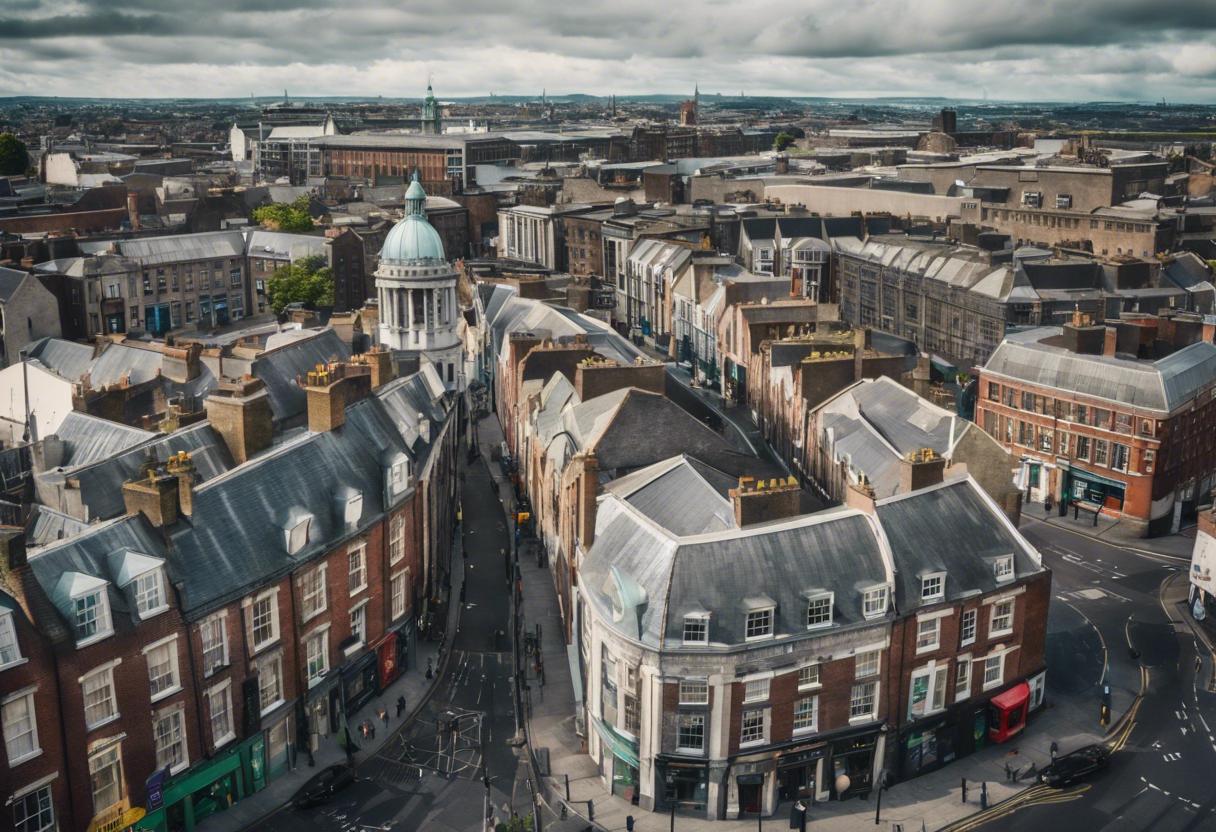Plans to transform two unoccupied Victorian red brick buildings in central Dublin, owned by the City Council, into affordable homes have been hindered. Instead, they are to be auctioned to a travel agency. The buildings, situated at the gateway of the freshly launched pedestrian-only plaza that extends along Liffey Street to the Ha’penny Bridge on the river’s north bank, are in an extremely visible location.
The double-storey structures at 30 and 31 Liffey Street Lower harken back to the 20th century’s early days. In the past, they have been rented out to a variety of businesses, including mobile and video game outlets, and even barbershops. The pandemic-induced circumstances have left them largely empty, and the council’s estimators have deemed them to be in a state of disrepair.
The council put these corner buildings of Liffey Street Lower and Strand Street Great up for sale last January, with an asking price of €550,000. The property’s zoning permits a variety of applications, including commercial, dining, and office spaces, plus hotel, residential, and cultural facilities.
The site piqued the interest of numerous potential buyers, and Chapville Ltd, a firm linked to Cassidy Travel agency, won the bid with an offer of €725,000. As part of the sale agreement, within half a year, the company is required to file for renovation permissions. If the redevelopment plan includes residential properties, the council has the first right of purchase.
Prior to the local elections last May, the city council’s members opted not to sanction the sale. Instead, they proposed evaluating the property with respect to converting it into social housing. The council’s adaptive reuse unit had reviewed the Liffey Street edifices. Established a couple of years ago, this division’s mission is to transform vacant commercial properties into homes. It similarly serves to repurpose council-owned structures into new residences.
Fiona Craven, the manager of the adaptive reuse programme, highlighted in a report that any redevelopment of buildings situated on a high-traffic commercial street should consider maintaining a commercial function on the ground floor. It was deemed feasible that the building in question could potentially accommodate two apartments on its upper floors, financed by the Department of Housing.
Across Liffey Street, a similar model is evident with three apartment levels positioned above ground-floor retail outlets. Such a structure was established during the 1990s as part of Liam Carroll’s major Bachelors Walk apartment project.
Craven also indicated that funding for non-residential aspects of mixed-use development proposals, like commercial ground floor and residential upper floors, isn’t covered by the Social Housing Investment Programme. Therefore, an alternative source of capital needs to be procured to endorse the commercial facet of the project.
She added that projects depending on various funds carry a higher risk of failure. Keeping this in mind and considering the yield of just two apartments from this redevelopment, it was concluded that available resources would be better utilised on projects with lower risks and greater residential outcomes.
This month, Chapville’s proposal to purchase the buildings was accepted by local councillors. The revamped pedestrian and cycle plaza featuring new paving, greenery, seating, and cycle racks is nearing completion and is set to be formally inaugurated in the coming month.

